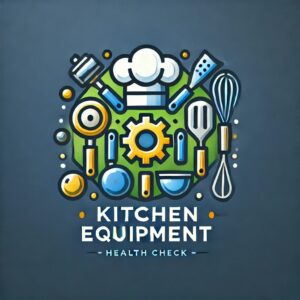“Colour coded chopping boards”
Although there is no specific legal requirement that mandates the use of coloured chopping boards, the use of such systems is strongly recommended under HACCP guidelines to help prevent cross-contamination between different food types during preparation. Additionally, the use of wooden chopping boards in commercial kitchens often comes with specific considerations due to their potential to harbour bacteria.
HACCP and Coloured Chopping Boards:
Risk Management: Purpose: Coloured chopping boards are part of an effective strategy to prevent cross-contamination. Different colours are designated for different types of food (e.g., red for raw meat, yellow for poultry, green for vegetables, etc.), making it easier for staff to keep foods separate during preparation.
Documentation: Incorporating the use of coloured chopping boards into a business’s HACCP plan is considered best practice. Businesses should document their color-coding system, usage guidelines, and cleaning procedures as part of their food safety management practices.
Legal and Regulatory Framework:
European Union (Hygiene of Foodstuffs) Regulations 2020:
General Requirements: These regulations require that all food businesses maintain high levels of food safety, including effective measures to prevent contamination. The regulations support practices that manage food safety risks, such as the use of coloured chopping boards, although they do not specifically mandate their use.
Safety, Health and Welfare at Work Act 2005:
Workplace Safety: This legislation mandates employers to ensure the safety, health, and welfare of their employees, including providing systems and procedures that minimize health risks in food preparation areas.
Wood Chopping Boards: Use of Wood: Potential Issues: Wooden chopping boards are often discouraged in commercial kitchen environments, especially for the preparation of raw meat, poultry, or seafood, due to their porosity and difficulty to sanitize completely.
Regulations and Recommendations: Although not specifically banned, food safety guidelines recommend against using wooden boards for raw foods in commercial settings because they can absorb liquids and harbour bacteria in scratches or grooves.
Alternatives: Non-porous Materials: It is advisable to use non-porous materials such as plastic or composite materials for chopping boards in commercial kitchens. These materials are easier to clean, sanitize, and maintain.
Recommendations for Food Businesses:Training and Compliance:
Training: Train kitchen staff on the color-coded system and the importance of not using wooden boards for certain foods to prevent contamination.
Compliance Checks: Regular checks and audits should be carried out to ensure compliance with food safety practices and to replace worn-out or damaged boards.
Maintenance and Hygiene:
Board Care: Regularly replace all types of chopping boards that show signs of wear and tear, such as deep cuts or grooves, whether they are made of wood, plastic, or other materials.
Cleaning Protocols: Establish strict cleaning and sanitization protocols for all chopping boards, using appropriate cleaning agents and methods to ensure they are free of pathogens.
Conclusion from DINEWISE:
Best practices are crucial as they go beyond minimum legal standards to further enhance food safety, improve quality, and reduce risks. Ideally, best practices should complement legal obligations, ensuring optimal safety and quality for consumers.
Lots of coloured boards might clutter up a small kitchen, but they are generally available in different sizes and one less risk is one less risk,
“The Smiles That Keep Them Coming Back”
Winning Hearts, One Plate at a Time









